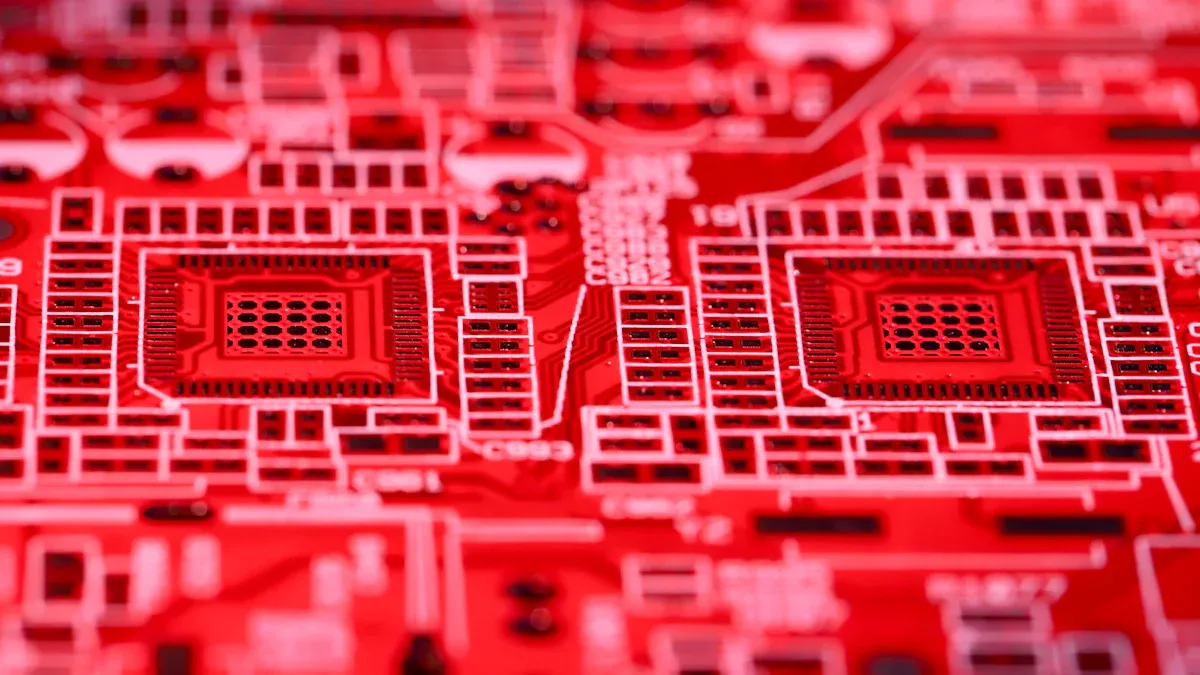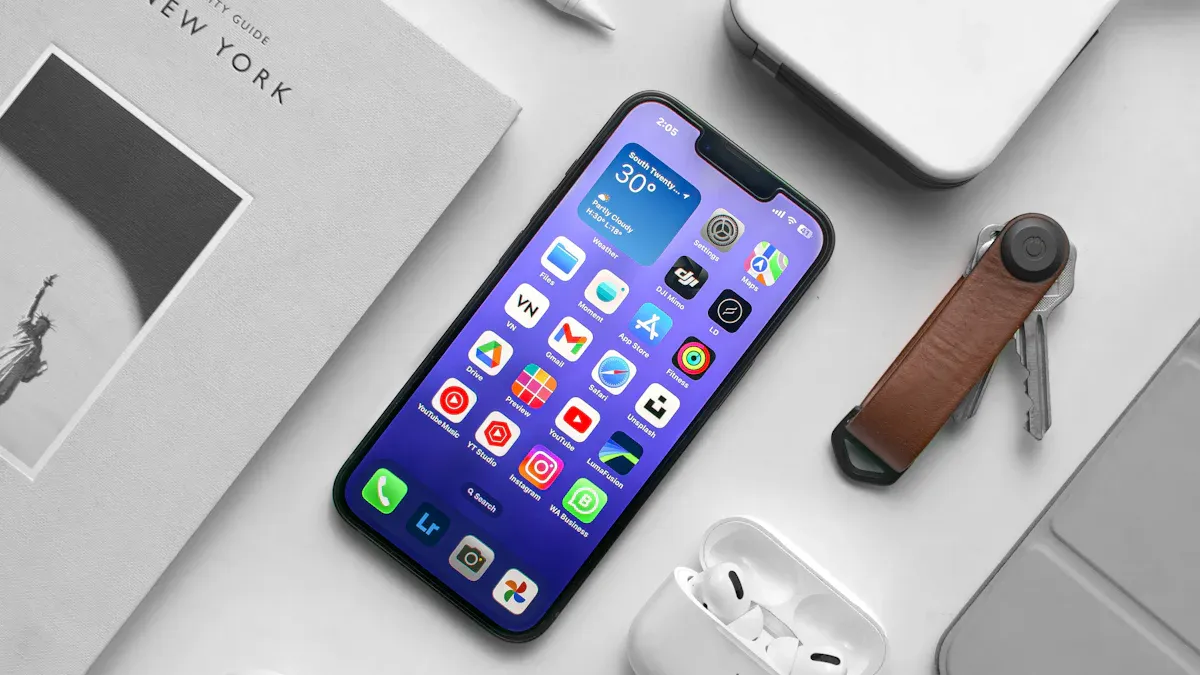How Integrated Circuits Power Everyday Devices
Look around your house and you will see integrated circuits inside many devices. These small chips help your smartphone take pictures. They let your computer play games. They also help control the temperature in your fridge.
The global market for integrated circuits was about $635.74 billion in 2023.
This shows how important these chips are. Next time you use your favorite gadget, think about the smart chip inside. If you want to learn more, just Request Quote for details.
Key Takeaways
Integrated circuits are tiny chips that work like brains in devices. They help make devices smaller, faster, and less expensive.
There are three main types of integrated circuits. Analog ones handle smooth signals. Digital ones work with on and off signals. Mixed-signal ones use both types of signals.
These chips power things you use every day, like phones and computers. They also help home appliances and cars work better and smarter.
Integrated circuits help save energy and make devices more reliable. They also let technology get smaller and stronger.
Because of integrated circuits, your devices run faster and use less battery. They also have new smart features that make life easier.
What Are Integrated Circuits

Image Source: pexels
Simple Definition
An integrated circuit is like a tiny electronic brain. Experts say it is a semiconductor device with many connected electronic parts. These parts work together to do a full job. Microchips are made on a small piece of silicon. They can hold thousands or even millions of parts. This makes them smaller, faster, and cheaper than old circuits with single pieces. If you open your favorite gadgets, you will see these microchips inside.
Key Components
Every integrated circuit has some main building blocks. These are:
Transistors: Work as switches or amplifiers. They control how electricity moves.
Resistors: Slow down or control the flow of current.
Capacitors: Hold and give out electrical energy when needed.
Diodes: Make sure electricity only goes one way.
All these parts are stacked in layers on a tiny silicon wafer. The smallest working part is called the die. The die is put into the black chip you see on boards. How these parts connect decides what the integrated circuit can do. It can do simple things like turn on a light. It can also do hard jobs like run a computer.
How They Work
Integrated circuits work because their tiny parts help each other. Here is how they do it:
Transistors do logic and make signals stronger. They help with math and choices.
Resistors and capacitors keep the circuit steady and safe.
Diodes guide electricity and stop mistakes.
Metal lines connect all the parts so they talk fast.
Engineers make these circuits by putting each part on a silicon wafer. They start by cutting silicon into thin wafers and polishing them. Then, they add layers with special chemicals and light. Each layer gives new features or links. After testing, the wafer is cut into chips. The chips are packed and tested again before use.
Tip: Integrated circuits are smaller and work better than old "discrete" circuits. Discrete circuits used single parts wired together.
Because of integrated circuits, your devices can be smaller, faster, and cost less than before.
Types of Integrated Circuits
There are three main types of integrated circuits. Each type does a special job in your devices. You use them every day, even if you do not see them.
Analog ICs
Analog ICs work with signals that change smoothly. These signals can be things like your voice or light in a room. The signals do not jump from one value to another. They move in a steady flow.
Analog ICs handle signals that are always changing, not just on or off.
They can work with slow or fast signals.
Inside, you find NPN/PNP transistors, CMOS, and thin-film resistors.
Large capacitors are hard to fit, so designers use direct coupling.
Operational amplifiers use low bias currents to save energy.
Differential amplifiers help keep the circuit steady when it gets hot or cold.
Many transistors or FETs make constant current sources. These work better than big resistors.
You find analog ICs in audio systems, radios, and sensor circuits. They help keep signals clear and correct.
Digital ICs
Digital ICs use signals that are only on or off. These chips use binary code, which computers understand.
Digital ICs work with binary data and do logic jobs.
They store information in memory chips like RAM and flash.
These chips help devices talk using serial, parallel, or wireless links.
They control voltage and help save power.
Logic gates, microprocessors, and programmable chips are in this group.
Digital ICs run your computer, smartphone, and game console. They let you save photos, play games, and send messages.
Mixed-Signal ICs
Mixed-signal ICs have both analog and digital parts on one chip. They help connect real things to digital devices.
Mixed-signal chips use sensors and amplifiers to pick up real signals. These can be heartbeats or sounds. They use converters to change these signals into digital data. Then, digital circuits use the data and show results, like your heart rate on a smartwatch. This mix makes devices smaller, faster, and more reliable.
Note: More than half of all consumer electronics use mixed-signal ICs. You find them in smartphones, tablets, and smartwatches. These chips help your devices sense, process, and share information easily.
ICs in Everyday Devices

Image Source: unsplash
Phones and Tablets
Your phone or tablet has many small chips inside. These chips help your device run apps and save photos. They also let you go online. The microprocessor is the main brain. It follows instructions and makes your device fast. Memory chips keep your apps, files, and system safe. Power management chips help your battery last longer. They control how much energy each part uses. RF chips let you call, text, and use Wi-Fi or Bluetooth.
Did you know? Mixed-signal chips help your phone use cameras and microphones. They turn real sounds and pictures into digital data. This lets your phone unlock with your face or count your steps.
Computers and Laptops
Integrated circuits are in every computer and laptop you use. The CPU is the main engine. It solves problems and follows commands. Memory chips like RAM and ROM store your files and help your computer remember things. Input and output chips connect your keyboard, mouse, and screen. They make sure everything works together.
CPUs have millions of tiny switches to work fast.
Memory chips let you open files and save your work.
Input/output chips help you type, click, and see things on the screen.
Computers got smaller and faster because of integrated circuits. Now, you can carry a laptop and still play games or do homework.
Home Appliances
Integrated circuits make home appliances smarter and better. In your fridge, chips watch the temperature and keep food fresh. Washing machines use chips to sense laundry size and pick the best wash. TVs use chips to show clear pictures and good sound.
Smart fridges can use Wi-Fi and send alerts if the door is open.
Washing machines save water and energy by using chips.
TVs use chips for streaming, voice control, and internet.
Smart chips help you save energy and enjoy new features. You can even control some appliances from your phone.
Cars
Modern cars use integrated circuits for safety and comfort. Special chips control airbags and brakes to keep you safe. Sensors and chips help with lane-keeping and crash warnings. Entertainment chips power screens, GPS, and music.
Airbag chips sense crashes and make airbags work fast.
Anti-lock brake chips watch wheel speed and help you stop safely.
Driver systems use cameras and chips to help you stay in your lane.
Entertainment chips let you use maps, connect your phone, and play music.
Cars have more chips every year. Experts think the number of chips in cars will almost double soon as cars get smarter and safer.
Benefits of Integrated Circuits
Miniaturization
Miniaturization changes how you use technology every day. Integrated circuits let you carry strong devices in your pocket or on your wrist. Here are some ways this helps you:
Integrated circuits fit more transistors on small chips, so you can use tiny, handheld, and wearable devices.
Smartphones and smartwatches stay thin and light, but they do even more now.
Smaller parts give designers more choices, so you get gadgets with bigger batteries and better speed.
Shorter signal paths inside chips make your devices faster and save power.
New ways to put chips together, like Ball Grid Arrays (BGAs), pack more power into small spaces and make devices work better.
Miniaturization lets you get information and finish tasks anywhere. You enjoy small devices that are strong and easy to carry.
Efficiency
Integrated circuits help your devices use less energy. You get longer battery life and pay less for power because these chips use smart designs and special materials to waste less energy.
Devices with integrated circuits do hard jobs but use less power.
Studies show these chips can cut power use a lot, so your phone or laptop works longer before you need to charge it.
Smaller chips with more transistors make your gadgets faster without using up the battery.
Eco-friendly ways to make chips, like recycling and low-heat steps, help the planet.
Tip: If you pick energy-saving devices, you help the Earth and save money too.
Reliability
You need your devices to work every day. Integrated circuits make electronics more dependable than ever.
Fewer parts and wires mean there is less that can break.
By putting many pieces on one chip, these circuits lower the chance of loose wires or broken parts.
Careful manufacturing makes sure each chip is high quality and always the same.
Using less power means less heat, so your devices last longer and stay safe.
You can count on your phone, computer, or car to work when you need them. Integrated circuits help your technology work well and keep you safe.
You use technology every day, like your phone and car. Tiny chips help these things work better. They make devices smaller, faster, and more dependable. In the last ten years, chips made connections stronger and graphics look better. Devices also got smarter because of these chips.
Experts think new chip designs will help AI, healthcare, and self-driving cars in the future.
As technology changes, you will notice even cooler features in things you use.
FAQ
What is the main job of an integrated circuit?
Integrated circuits help your devices think and work. They control, process, and store information. These chips act like the brains in your gadgets. They make sure things run fast and do the right job.
Can you find integrated circuits in all electronics?
Almost every modern device uses integrated circuits. Phones, computers, and cars have these chips inside. Even kitchen appliances use them for smart features.
How do integrated circuits help save energy?
Integrated circuits use less power than old circuits. This means your device batteries last longer. They also help lower your home’s electricity bills.
Are integrated circuits safe to use?
You can trust integrated circuits to be safe. Makers test them to make sure they work well. These chips help your devices stay safe and protect you from problems.
Will integrated circuits keep getting better?
Yes! Engineers are always working to improve integrated circuits. They make them smaller, faster, and smarter. Your future devices will have more cool features and work even better.









